Scroll through the photo to see the before and after treatment.
↔


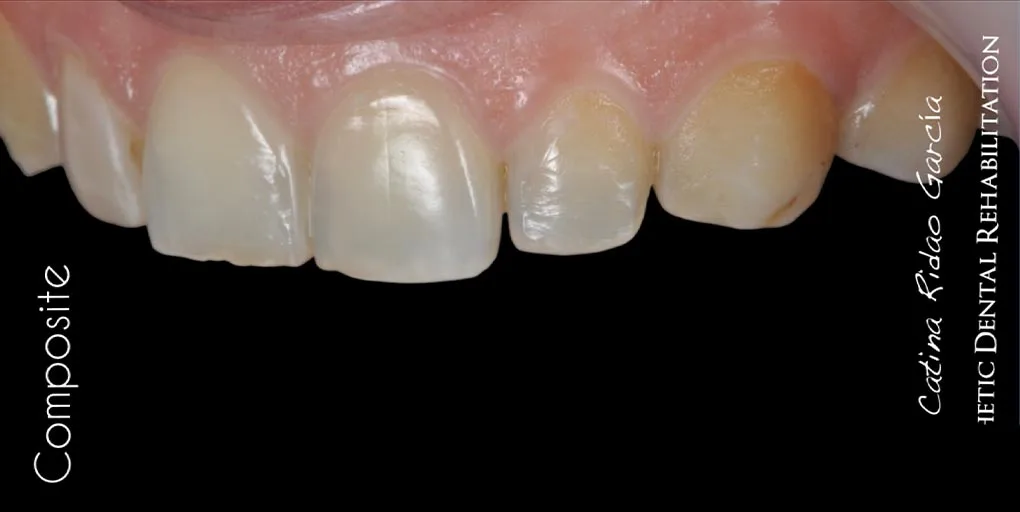
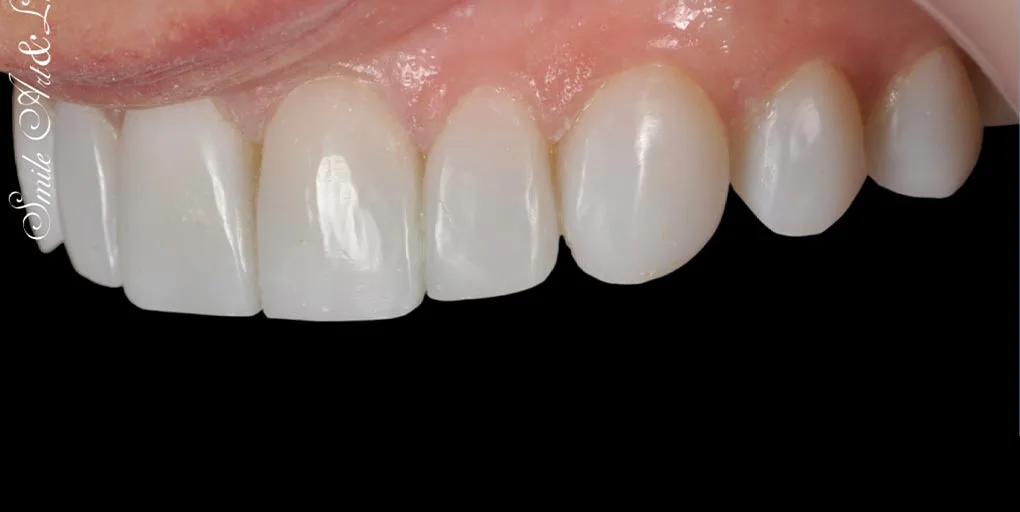


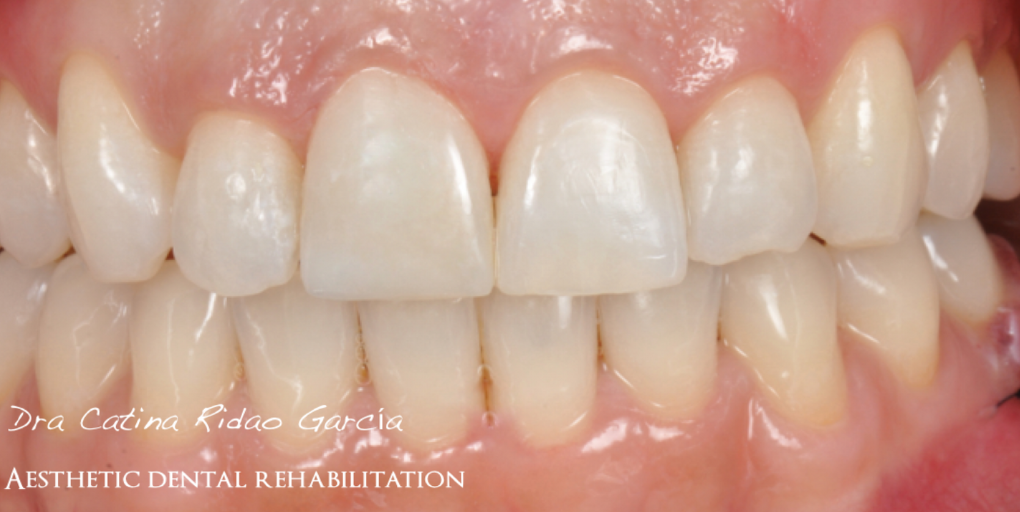
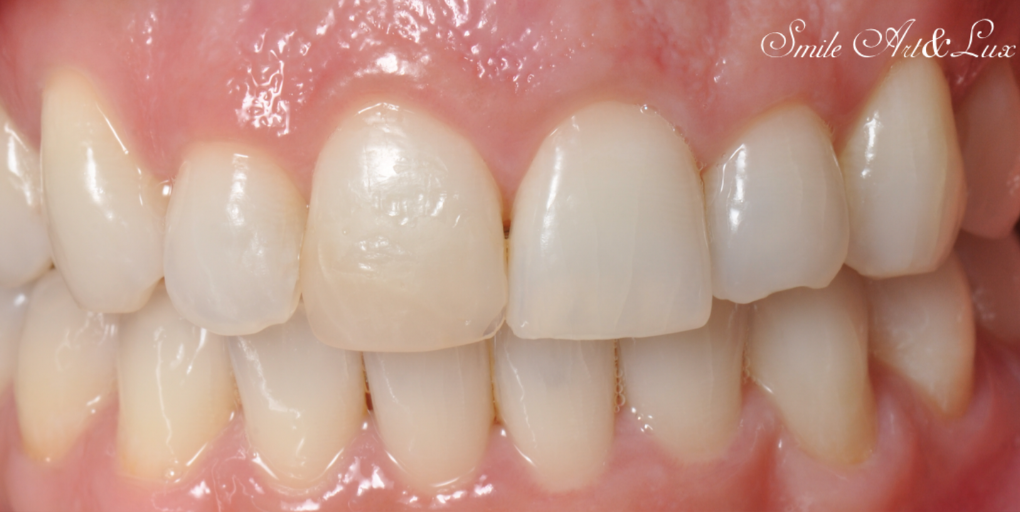




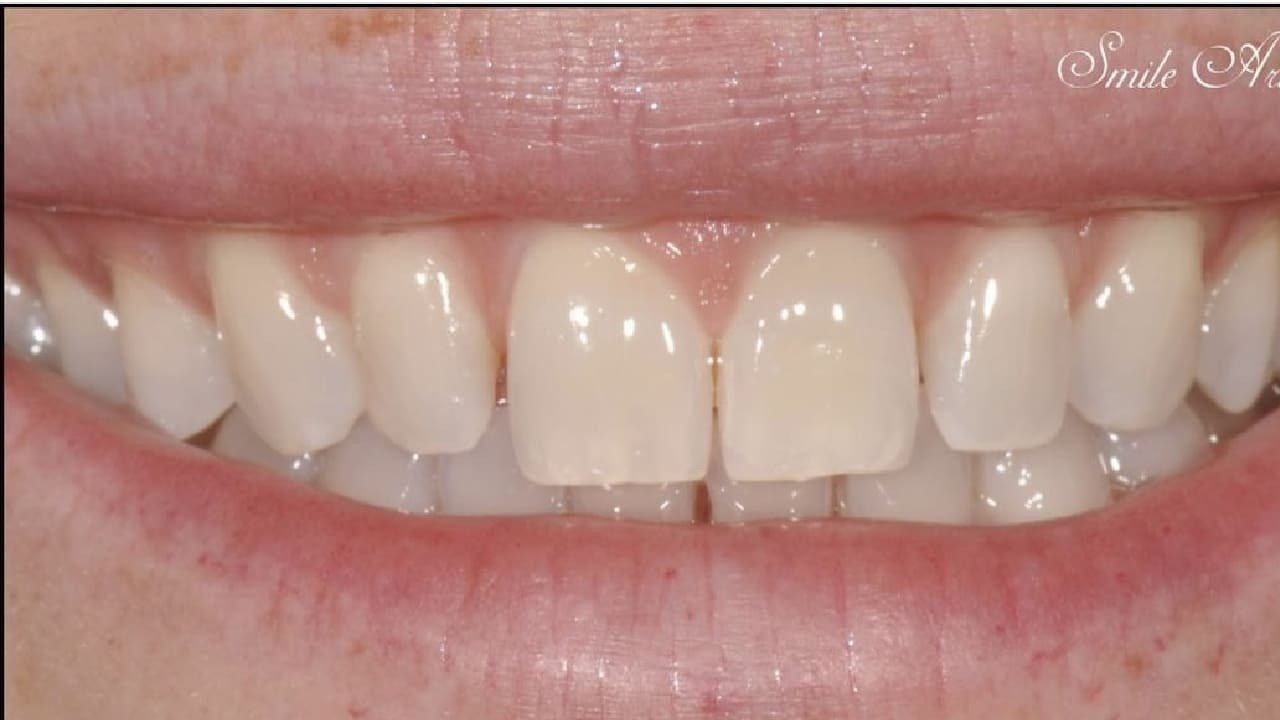
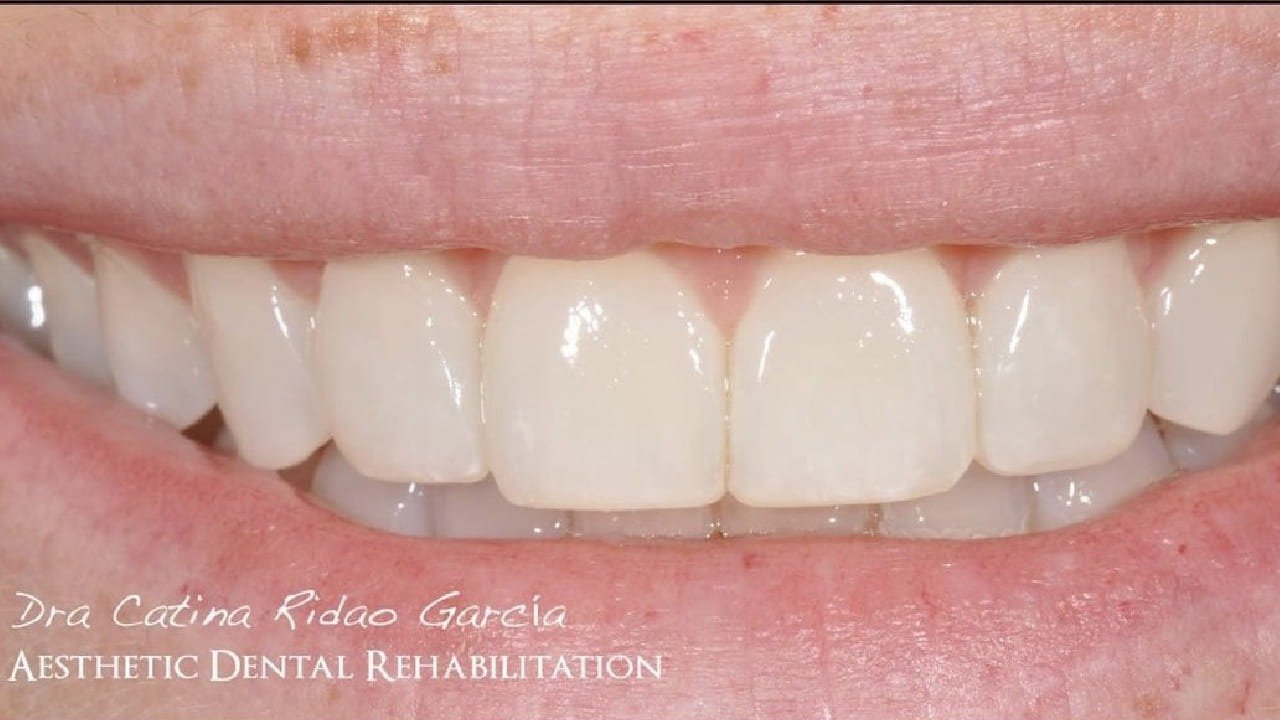
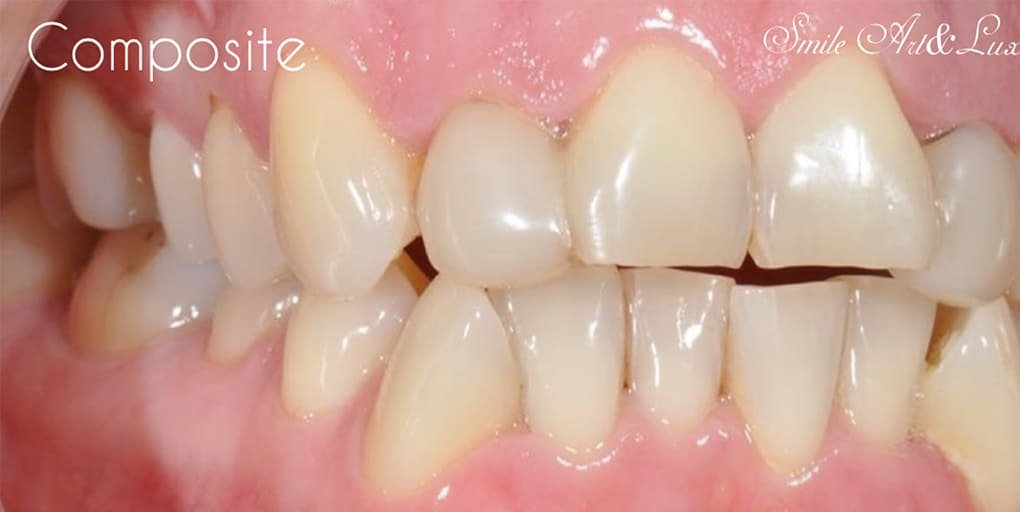
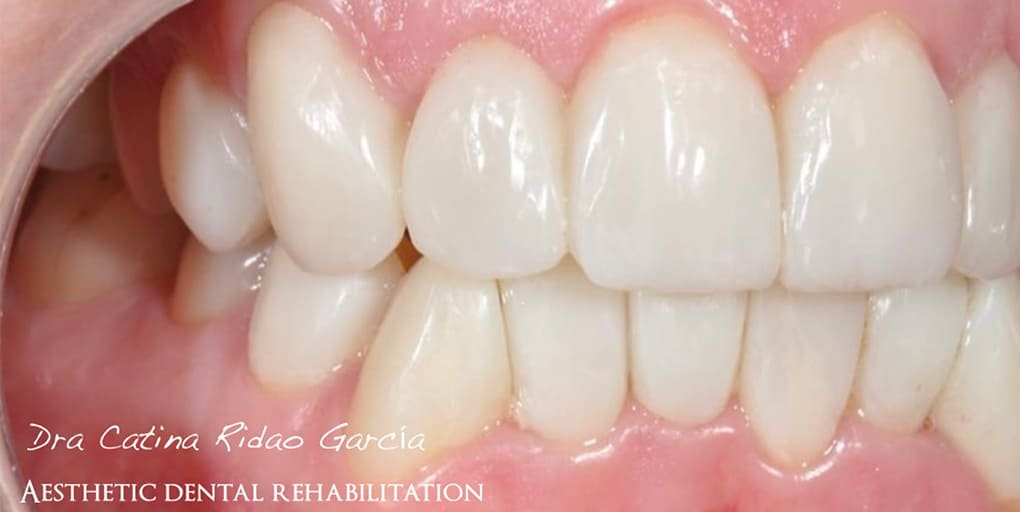
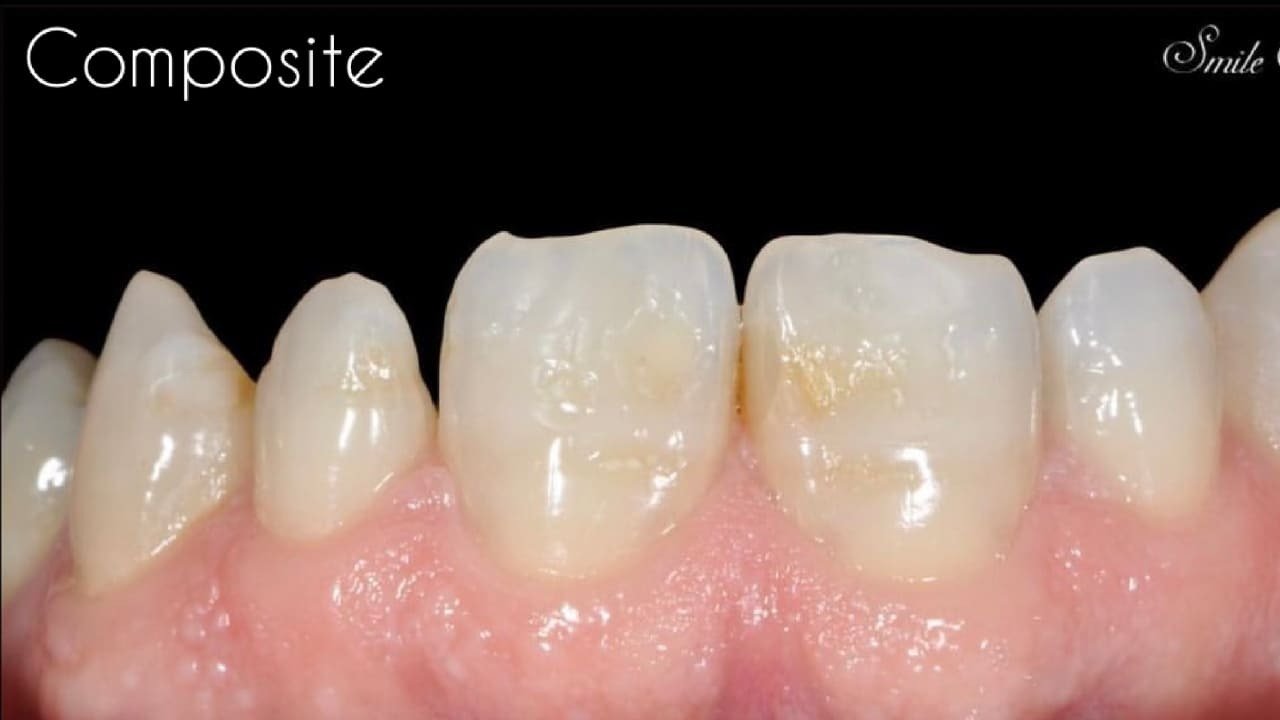
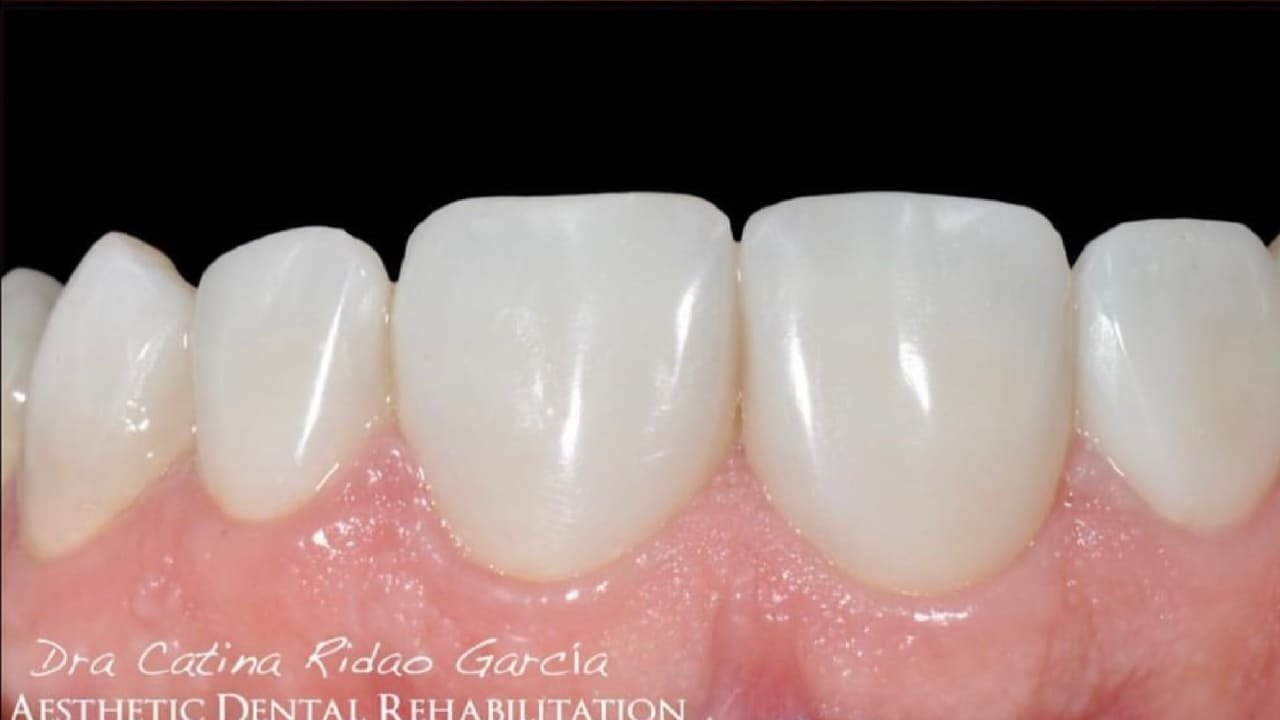

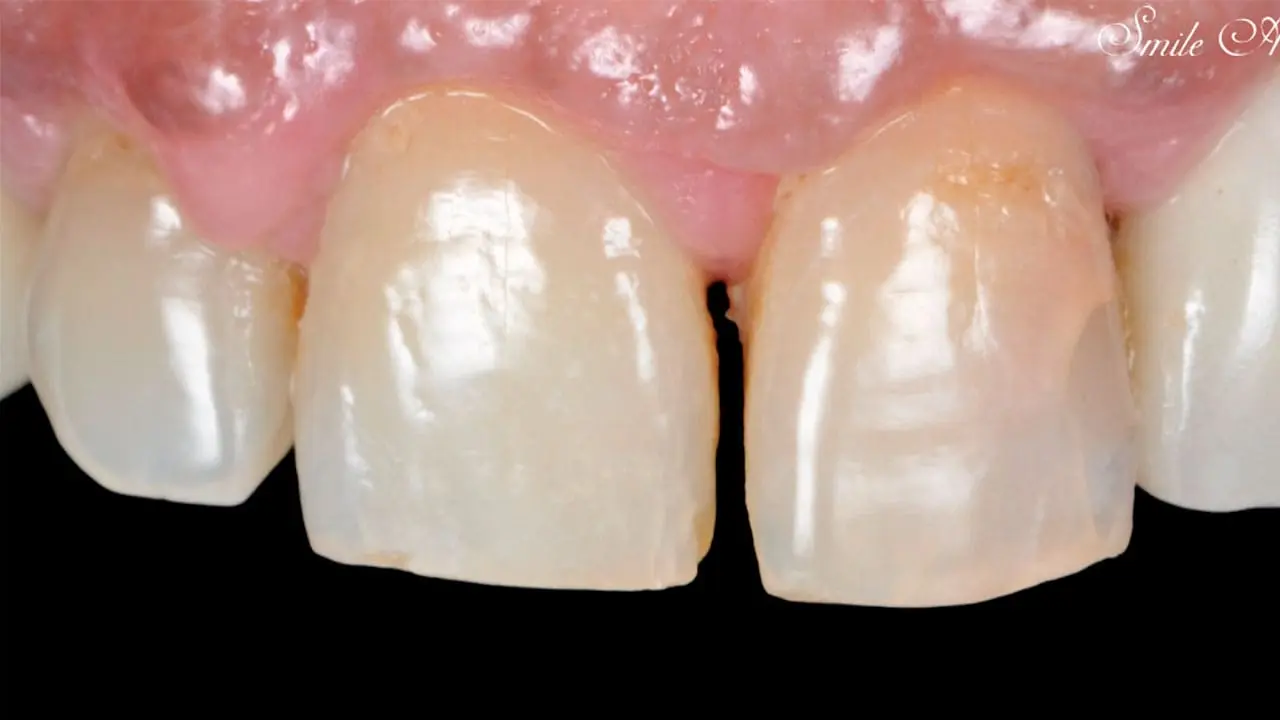
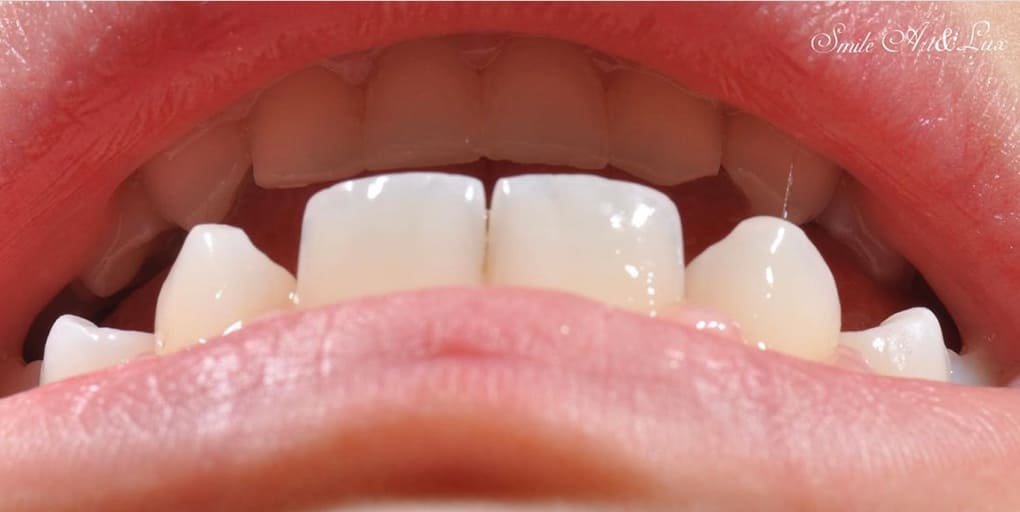
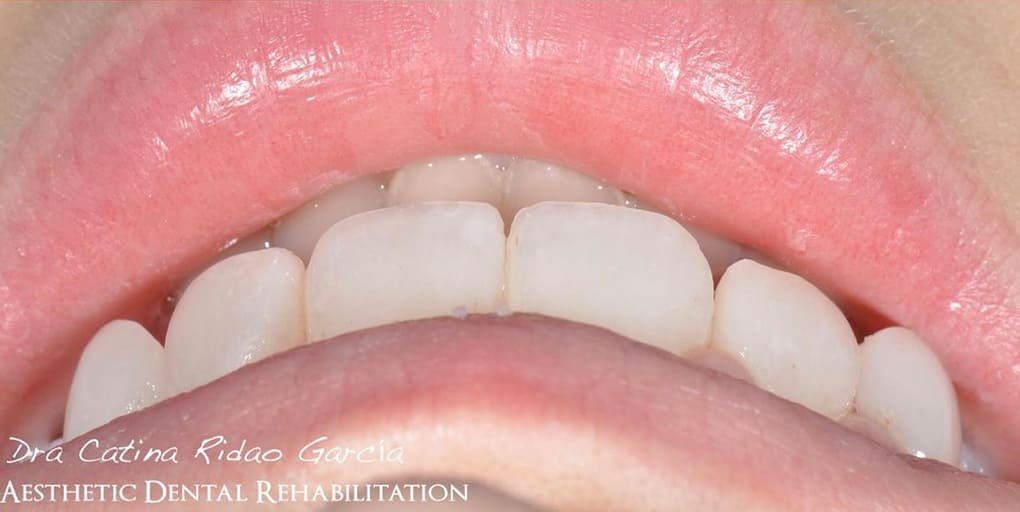
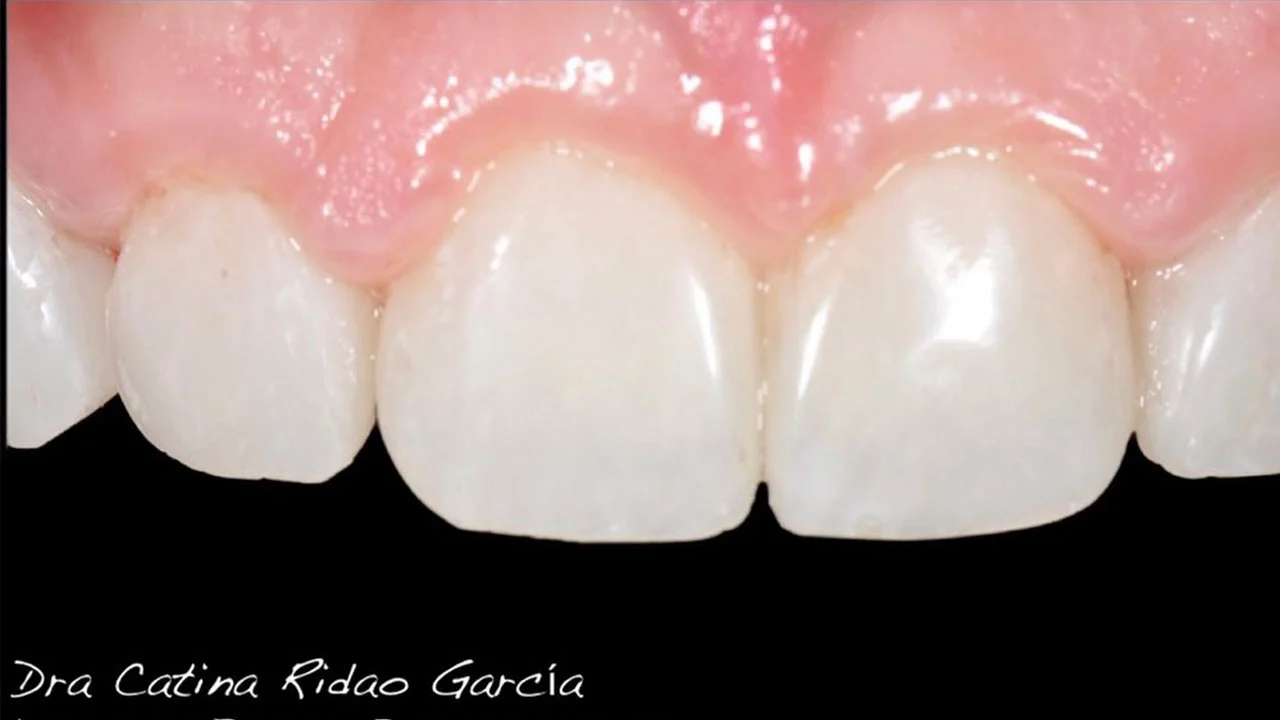
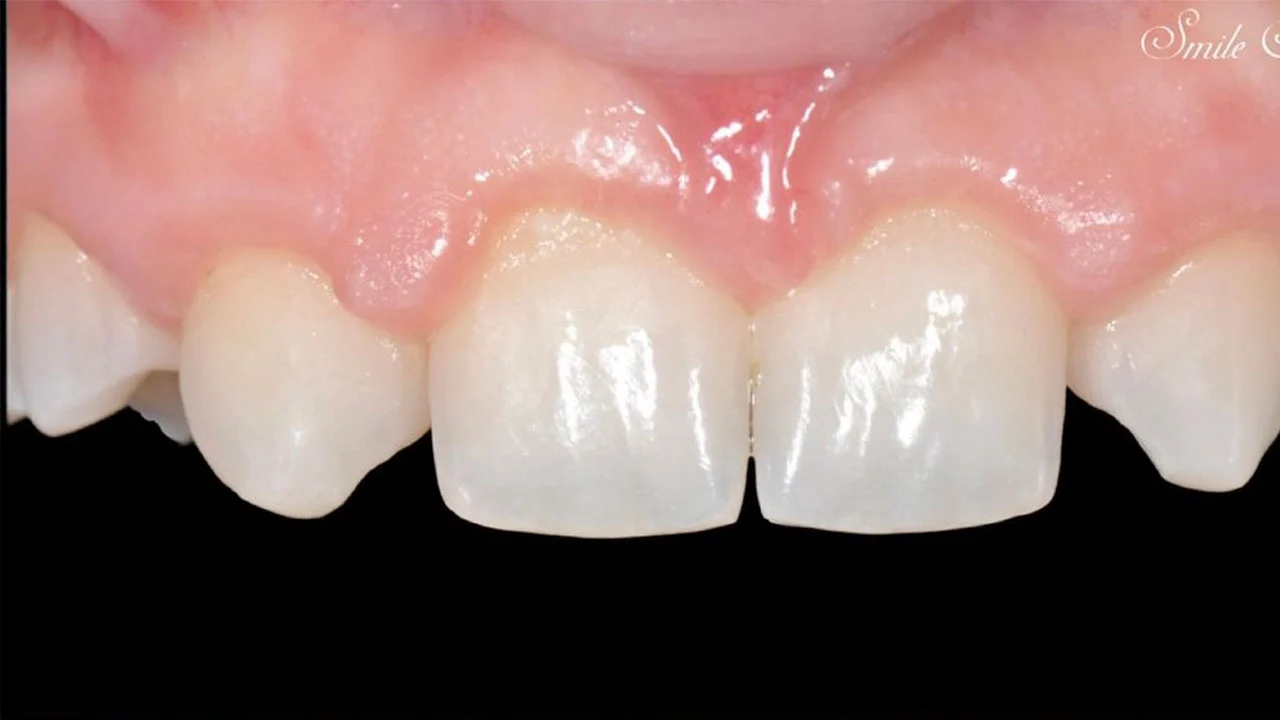
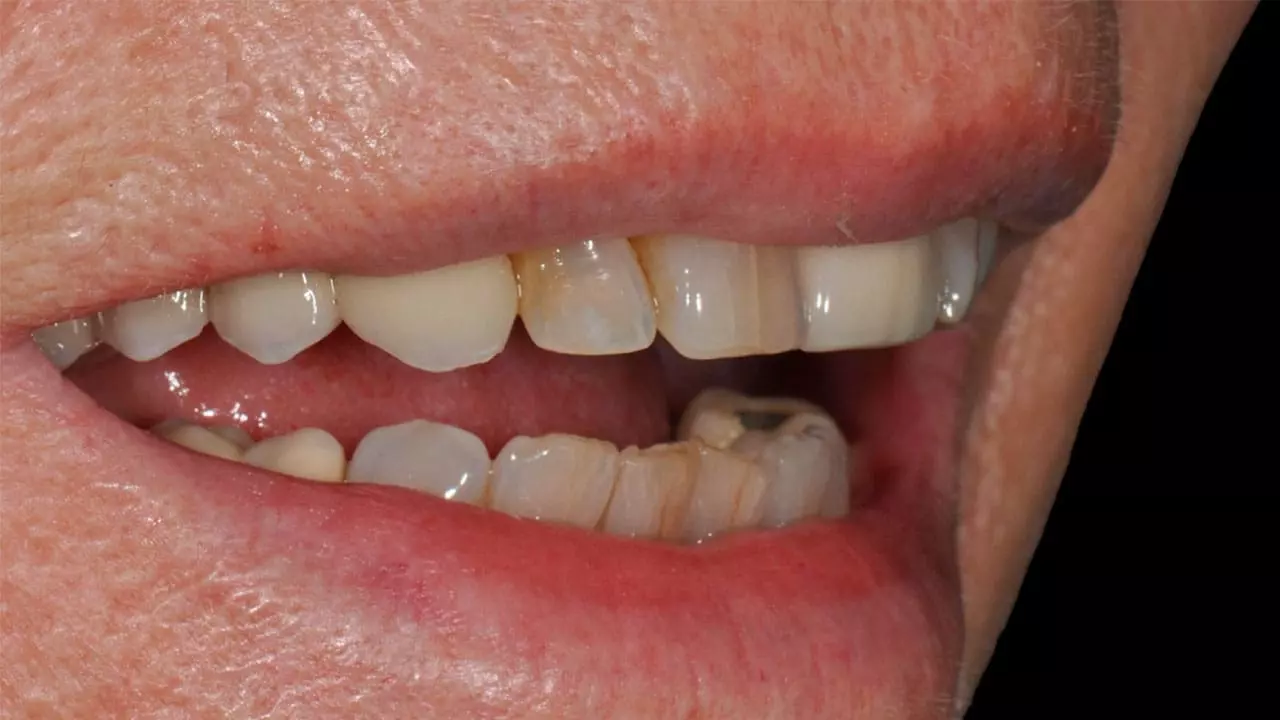
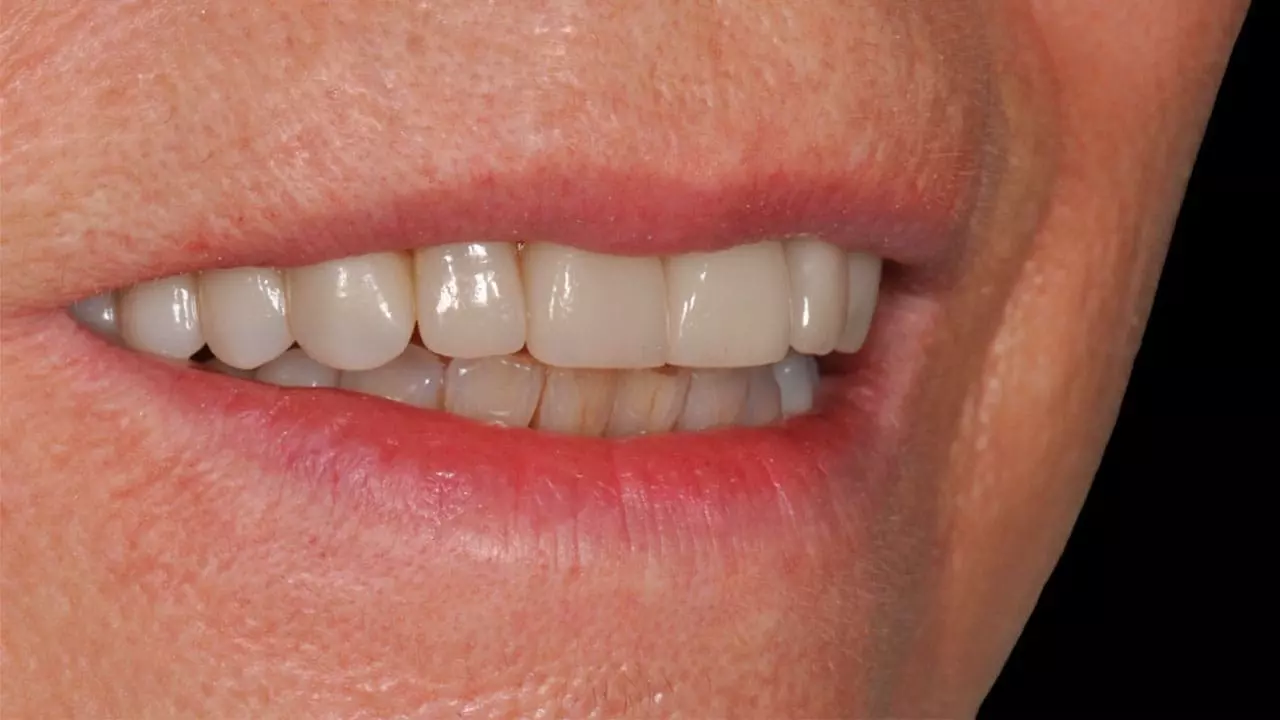
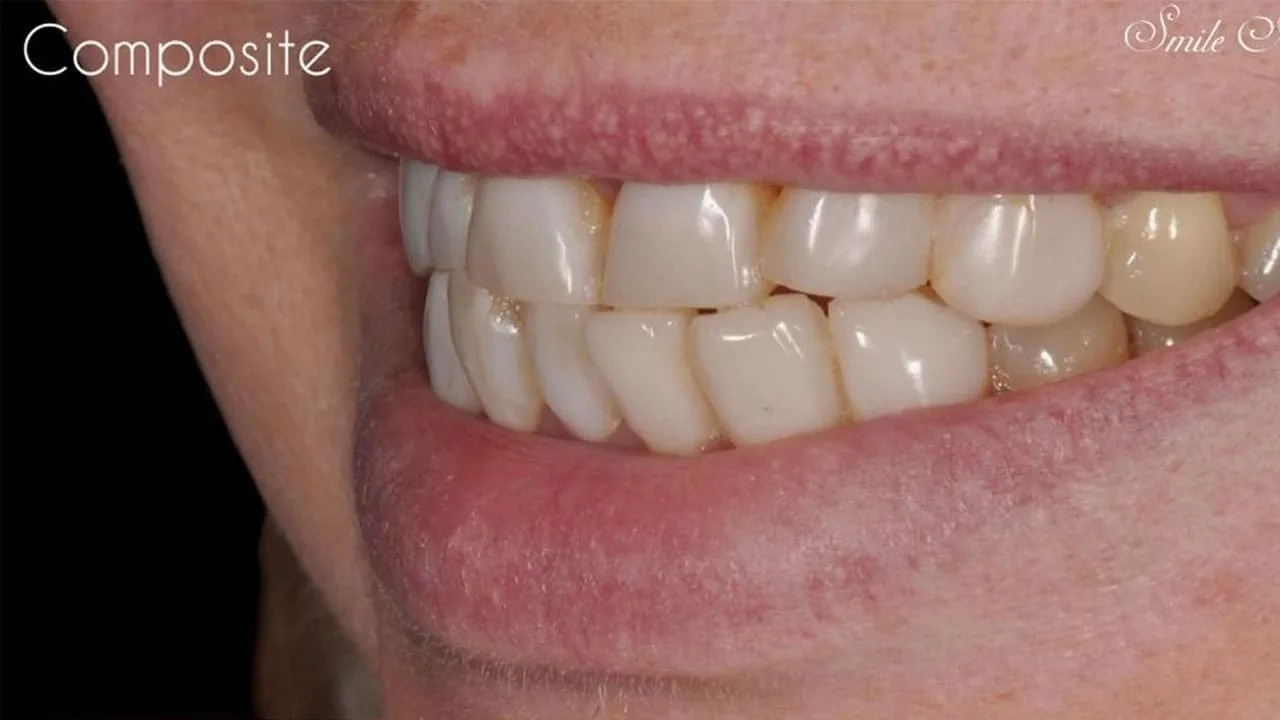
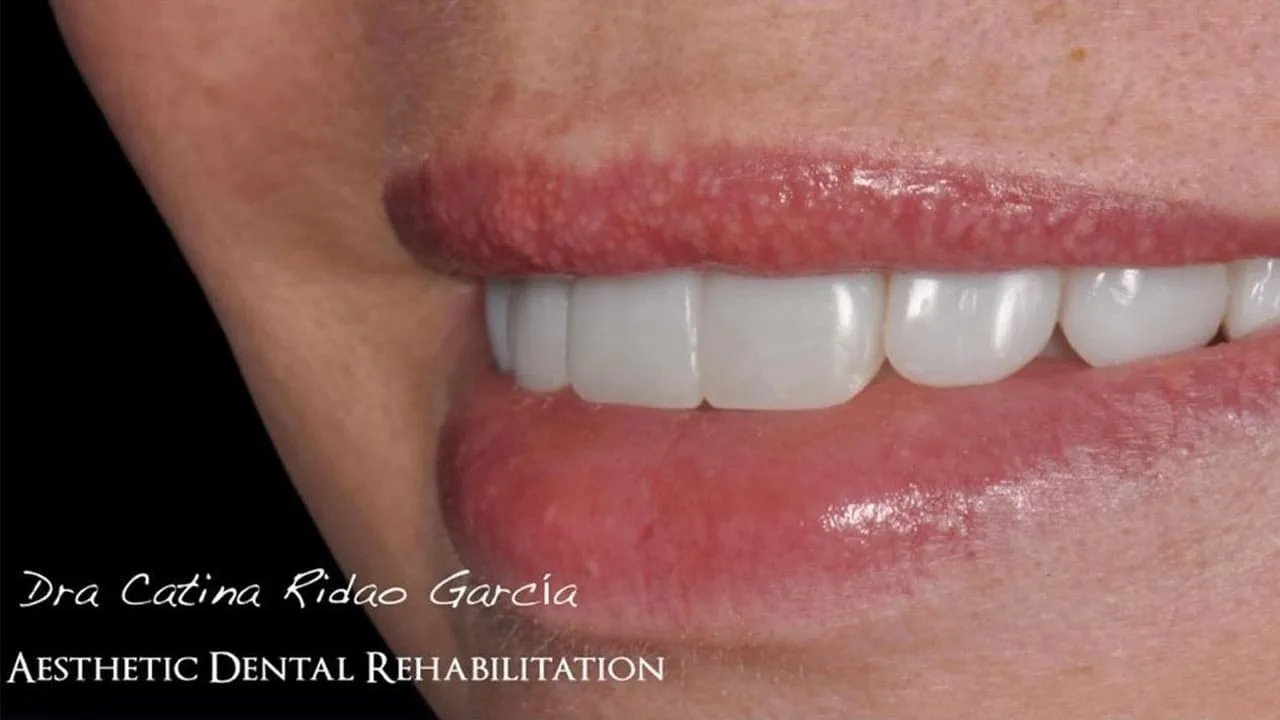
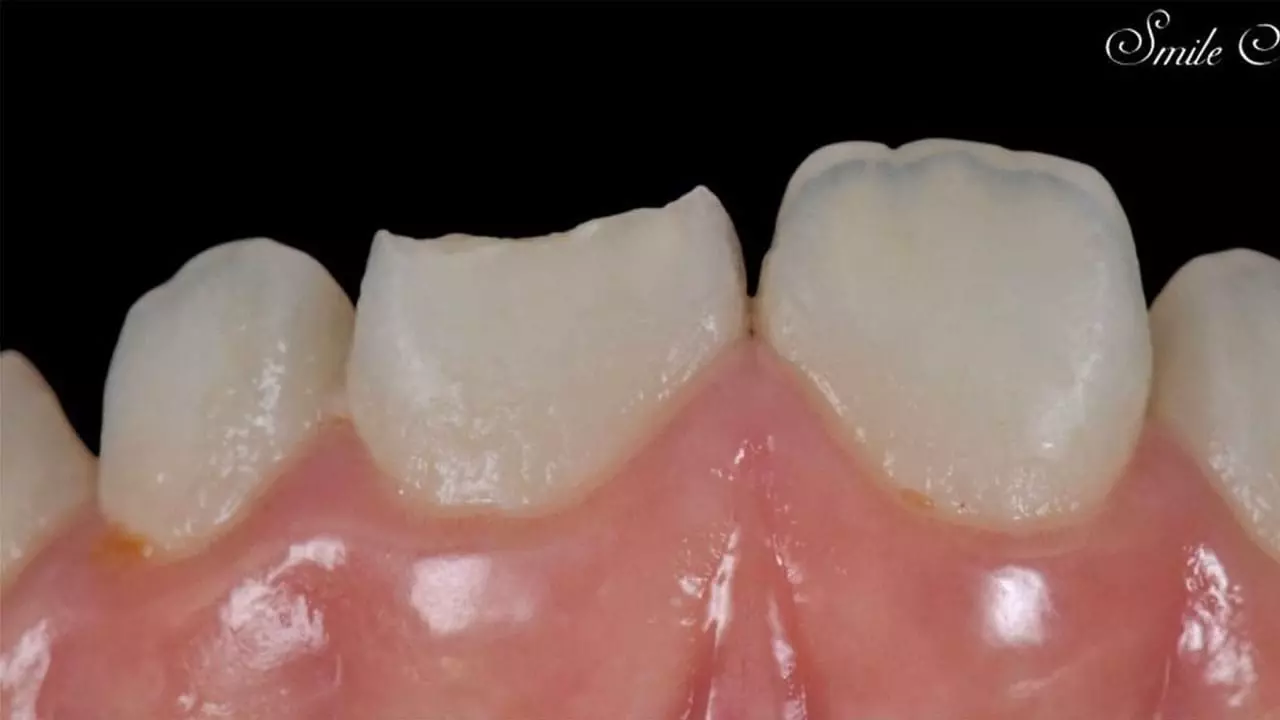
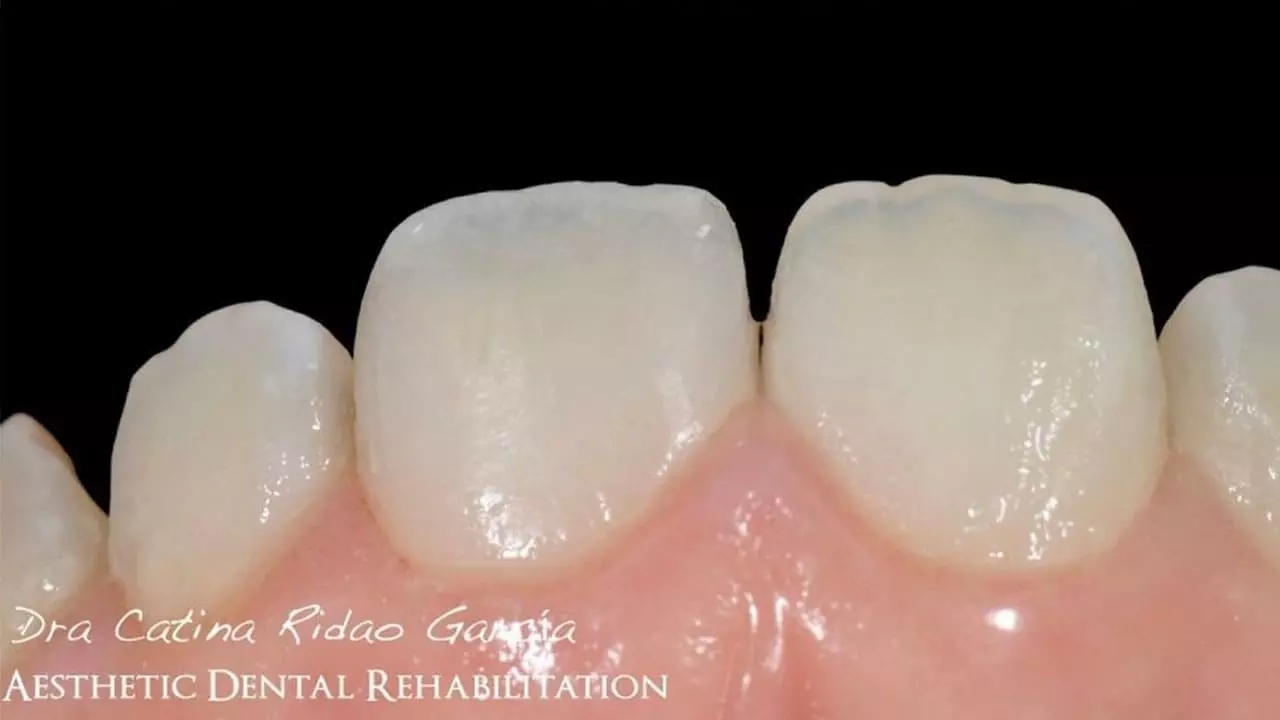
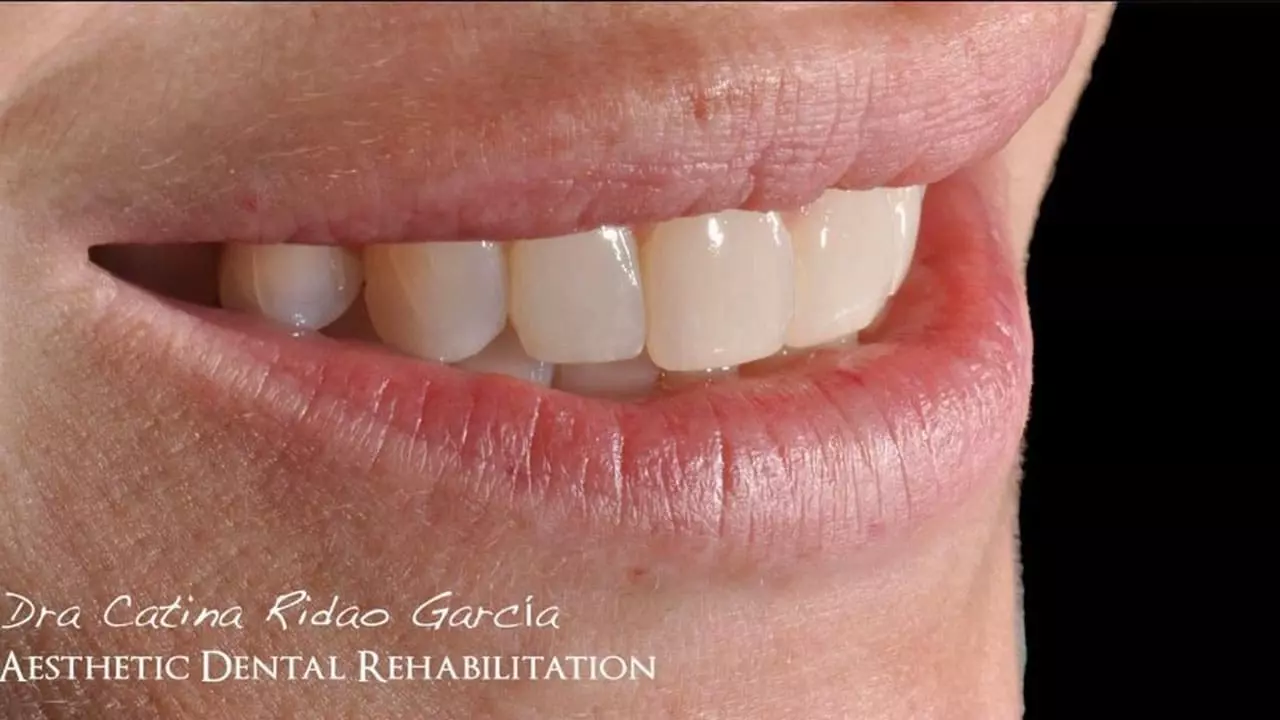

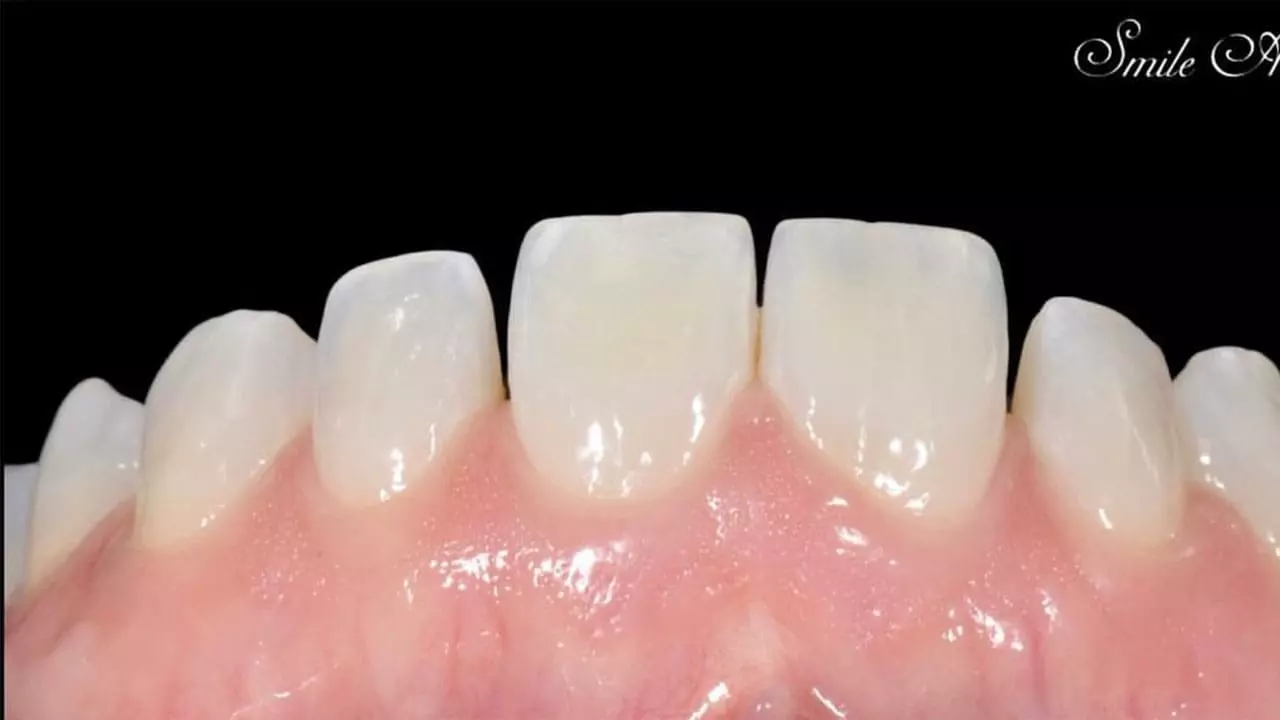
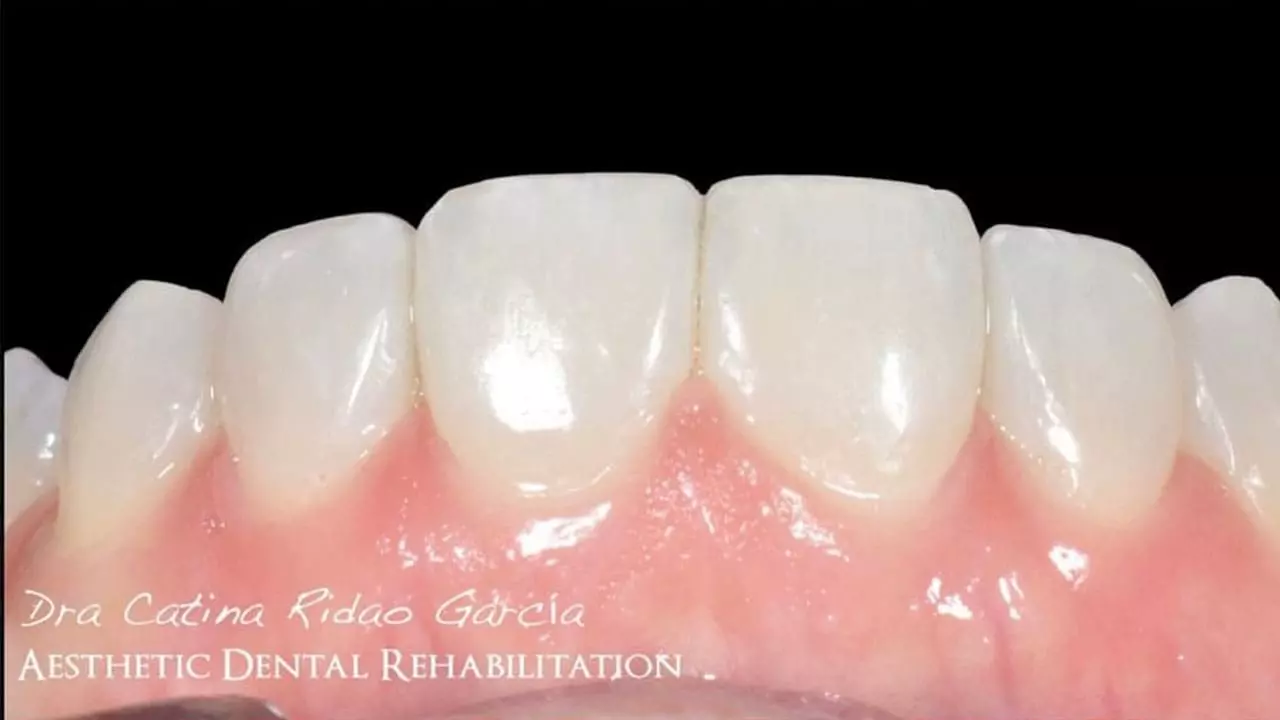
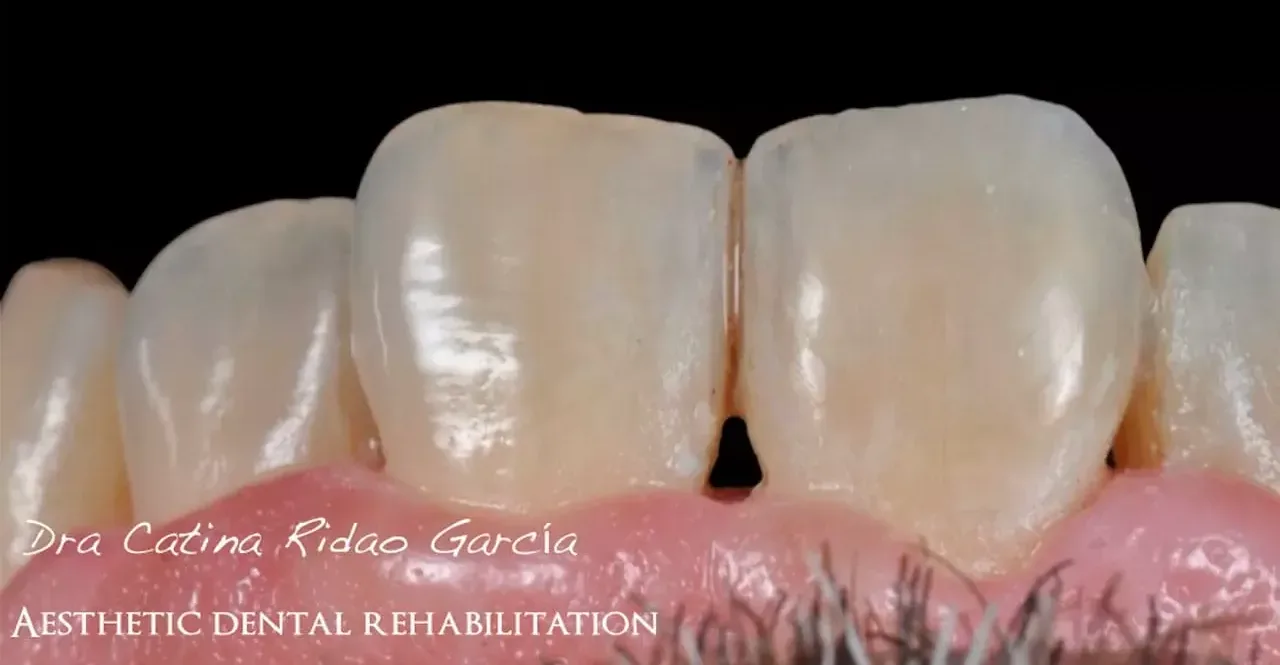
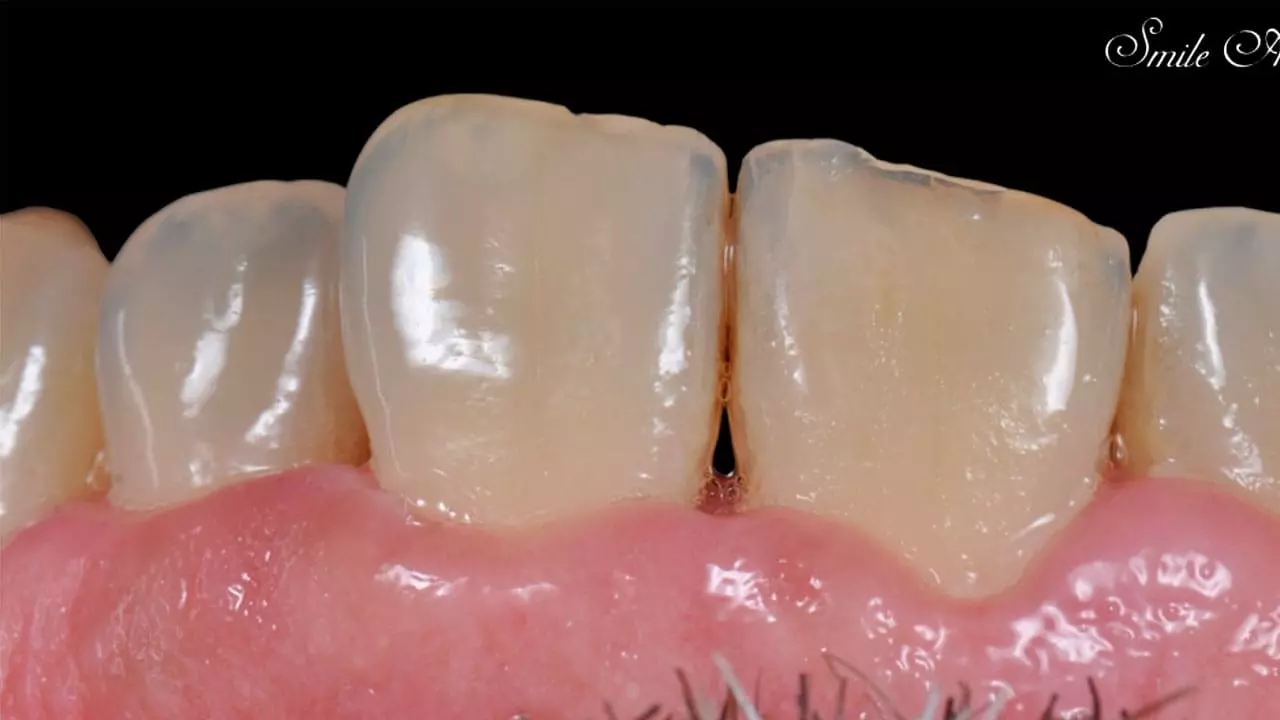
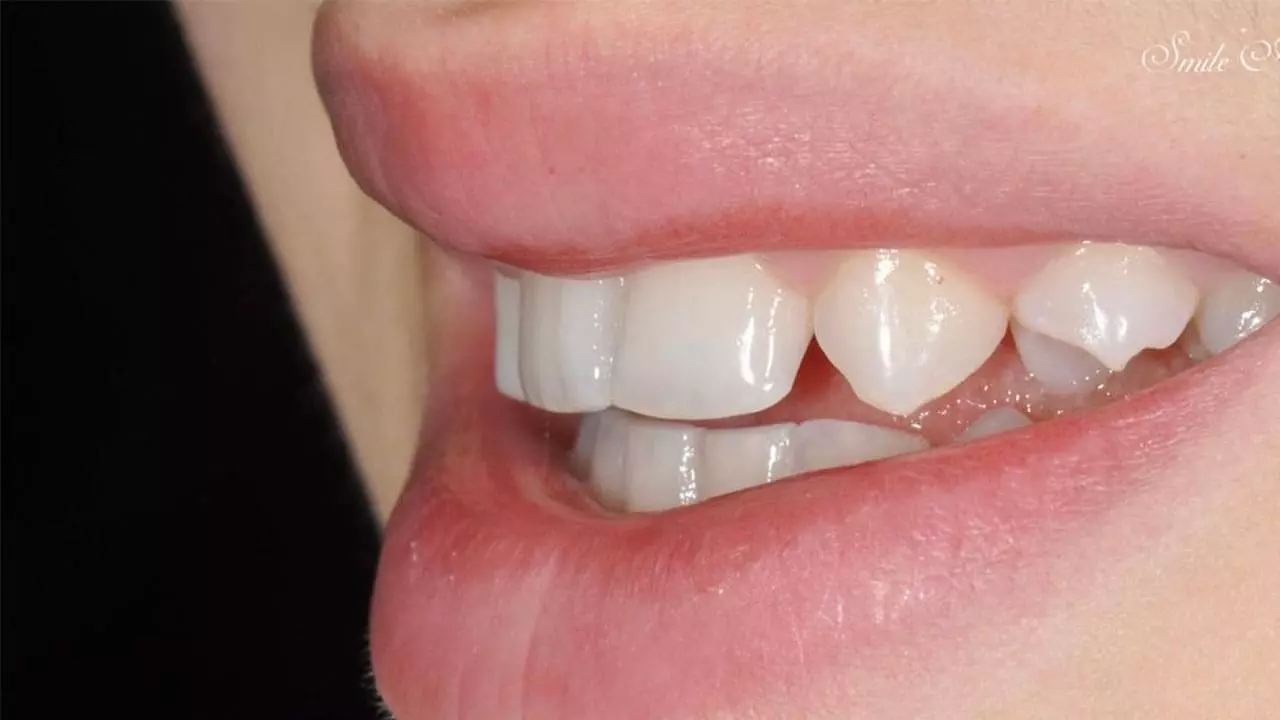
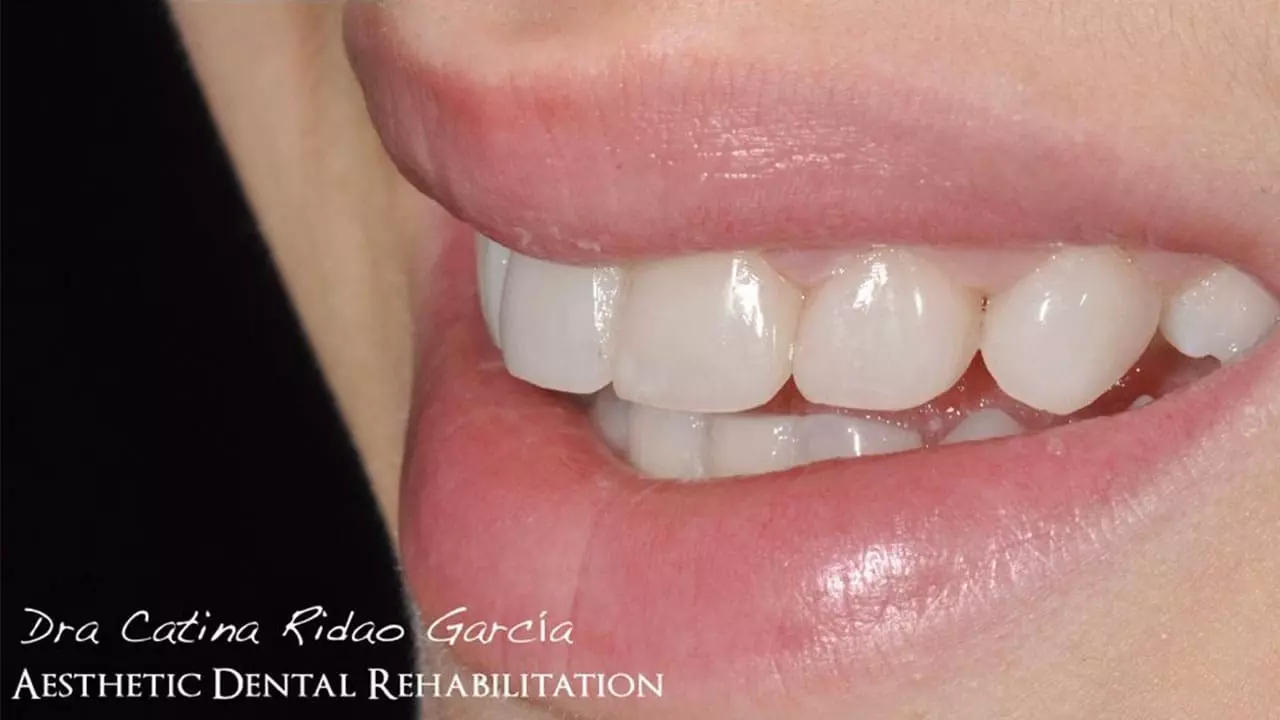
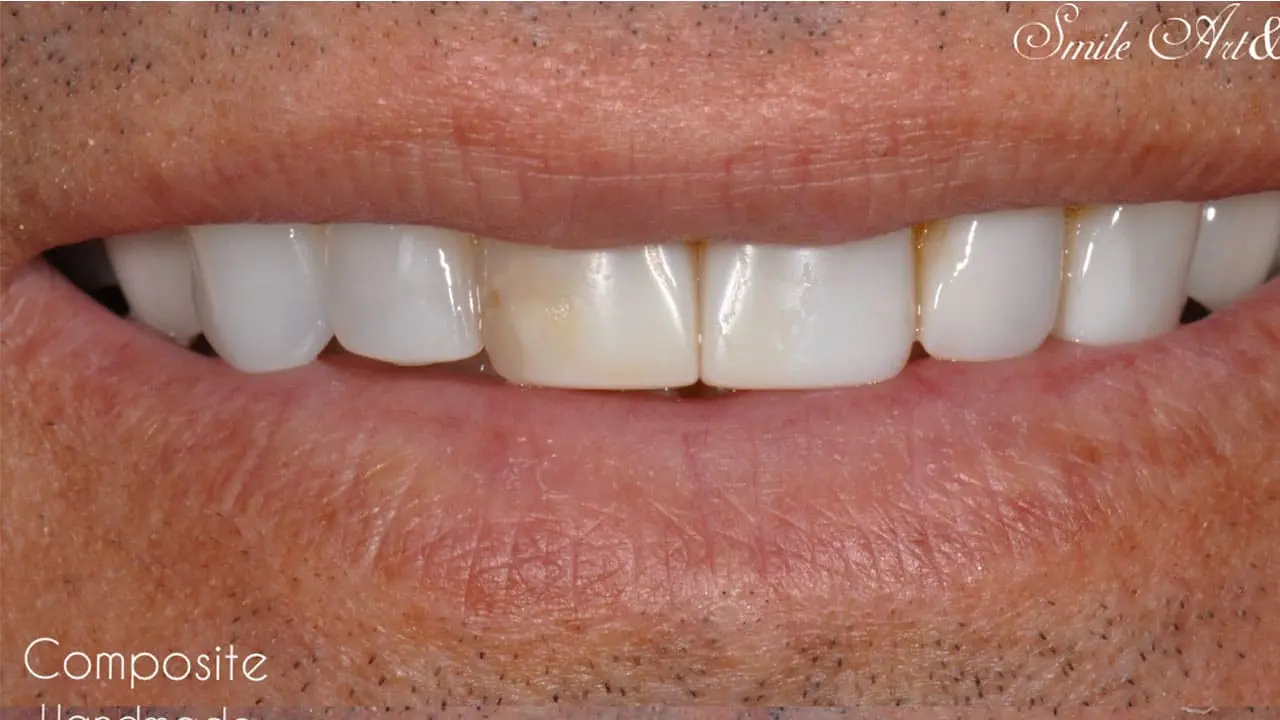
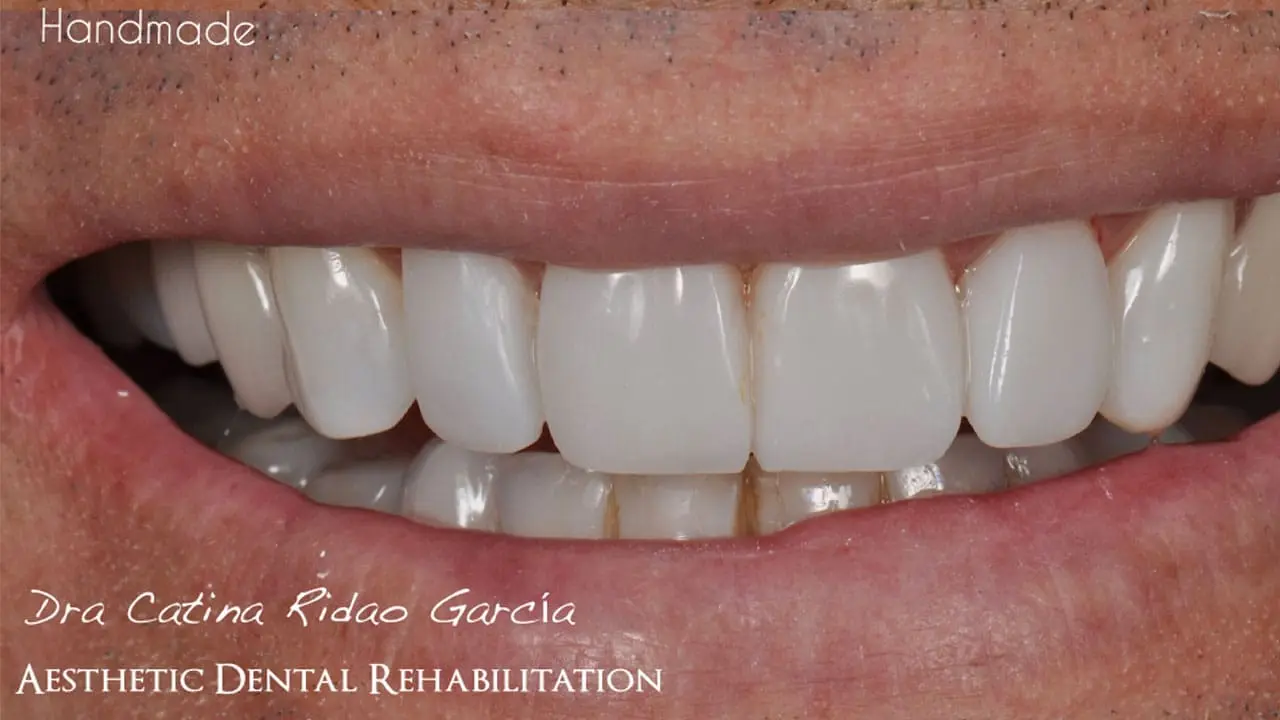
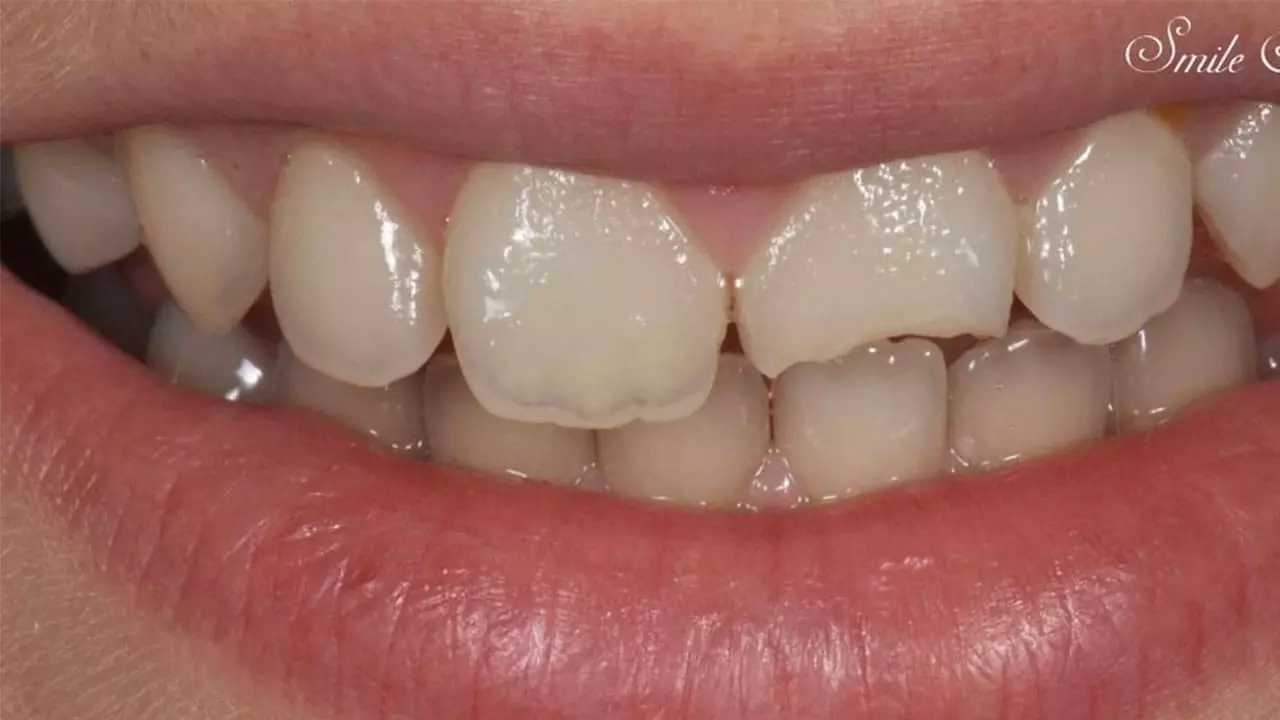
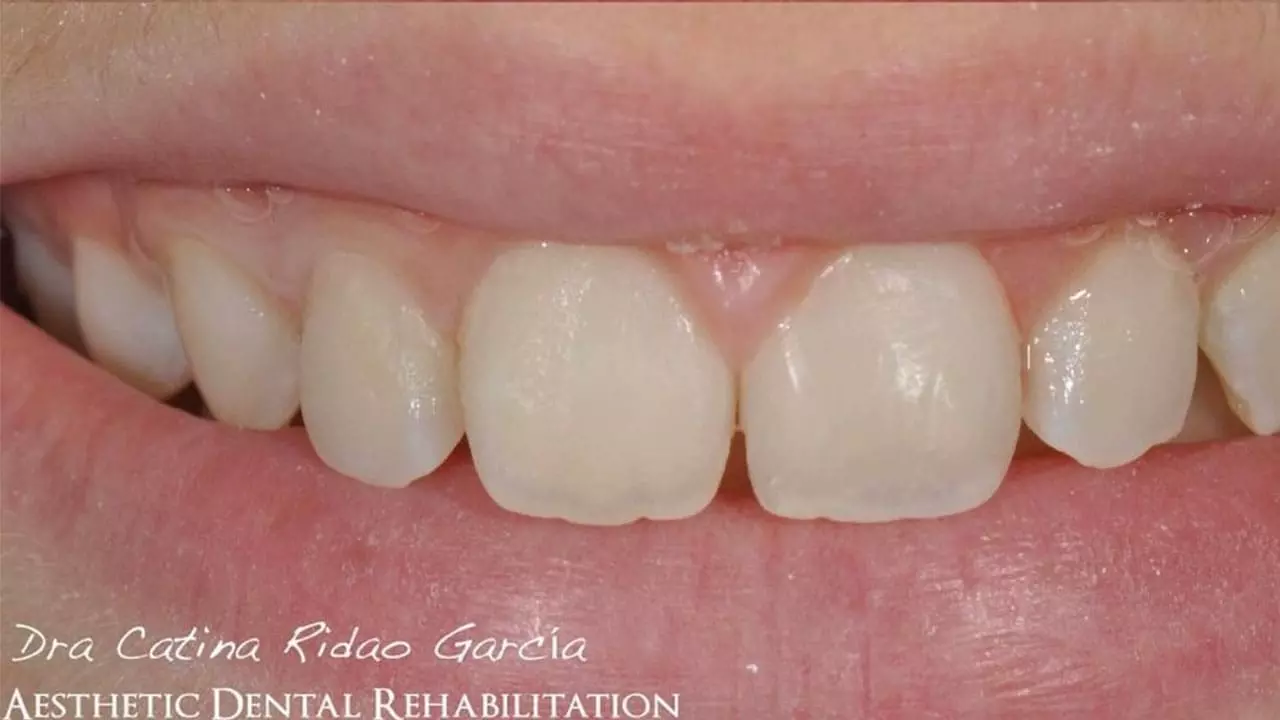
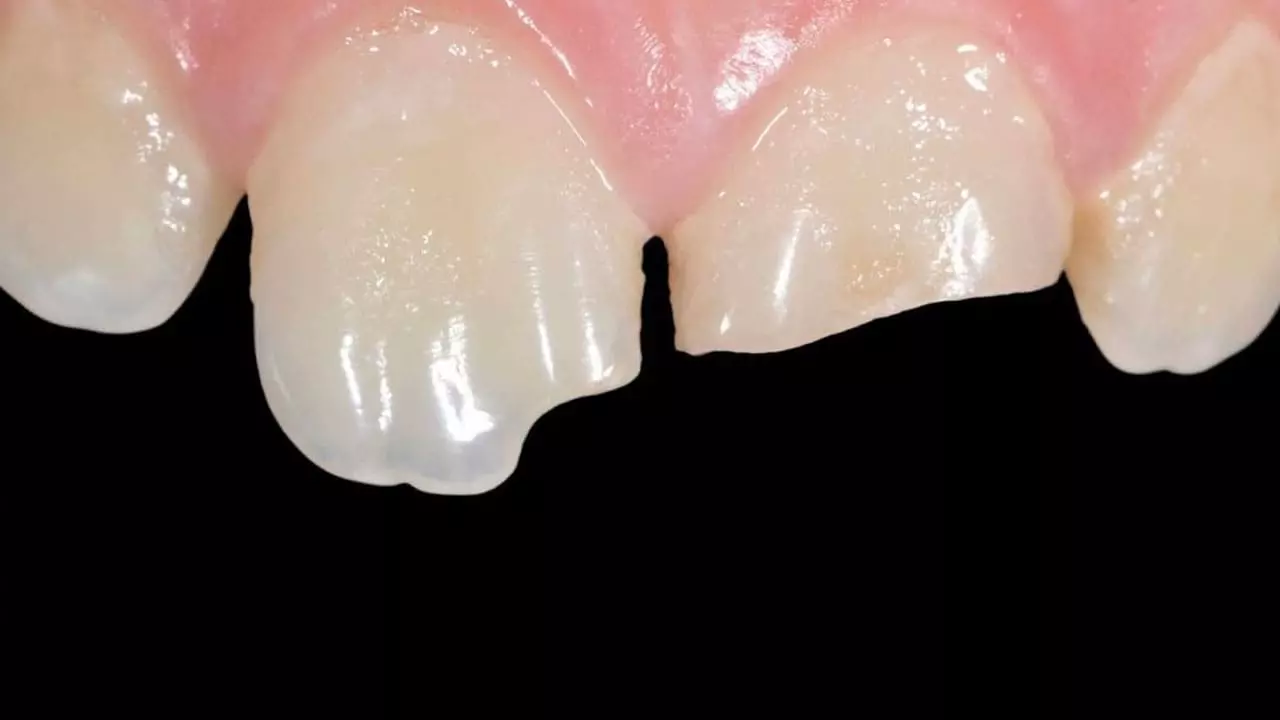
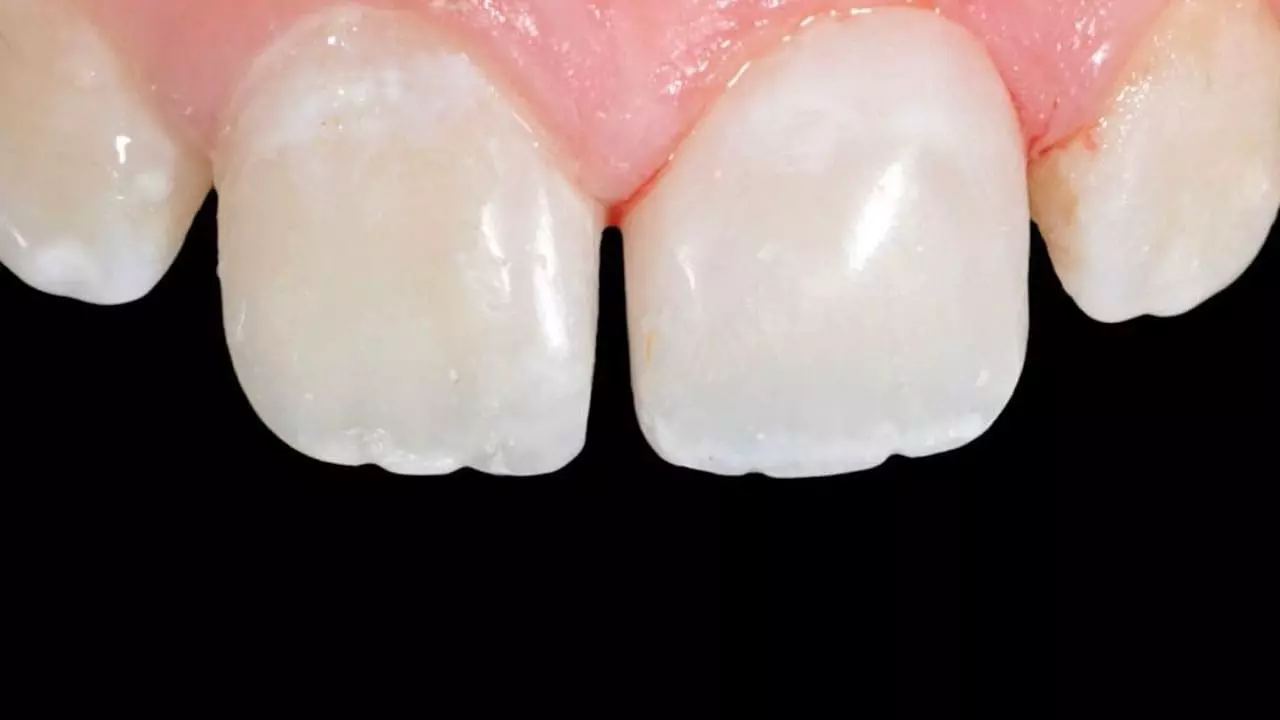
Veneers
Veneers are thin sheets of ceramic or composite that are placedn on the front of the tooth to modify shape, cracks, color, sometimes even, correct small alignments. The use of one or another material gives rise to differentiated treatments.
The choice of material will depend on many factors, among others, the patient's habits, and the diagnosis will be determined after the first assessment, explaining in detail. beforehand the pros and cons of both treatments.
The ideal thing if you want to do a smile design is to do prior whitening, to have a good substrate when making the veneers, whether ceramic or composite. In both cases, the thin sheets present certain transparencies that allow let the light pass through and reflect in the final result.
Composite veneers.
Composite veneers constitute a very conservative treatment since it does NOT require minimal preparation of the teeth. The tooth is not touched at all. So in the future if you decide to reverse the treatment it could be done while keeping your teeth intact.
They stick directly on the teeth, getting the shape with thin layers of material, and layering with different shades to obtain the maximum possible naturalness (similar to the placement of nails).
They are the ideal choice for young patients who require healthy habits.
It is advisable to perform maintenance every 6-12 months to maintain an aesthetic and functional appearance, eliminating any stains that may have occurred. These spots can be caused by some bad habits that you previously warns of its consequences the day of diagnosis. Composite veneers may fracture minimally if not eliminate or minimize bad habits. The good thing is that they can be easily repaired. unlike ceramic veneers whose repair requires shipping to the lab.
After 3-5 years, the veneers are usually renewed, removing the last layer and placing a new one, so that they shine again as they did at the beginning.
Composite veneers are made in one intervention of a certain duration. It is recommended a second appointment to check and see if is needed or wanted modify something.
Comparison between composite and porcelain veneers
COMPOSITE VENEERS
- There is NO tooth preparation.
- Direct placement on the teeth in one/two sessions.
- If they break they can be easily repaired.
- More economical.
- It requires constant personal maintenance and at least 1-2 times a year in the clinic.
- Half life 3-5 years.
- Suitable for small corrections of alignment, color, fractures, wear, tooth rotation.
PORCELAIN
- Minimal tooth preparation.
- They are made in the laboratory.
- Four/five sessions are required.
- Possibility of doing it in just one week only if planned in advance (for patients from abroad).
- It is very difficult for them to fracture if you have appropriate habits.
- Maintenance is regular checkups at the dentist.
- Average life 10-15 years.
- Suitable for correcting more serious aesthetic discrepancies.
- They do not absorb stains. Its polish is greater than any natural tooth.
- Types: lithium disilicate (Emax) and feldspathic.
- Suitable for smokers.













